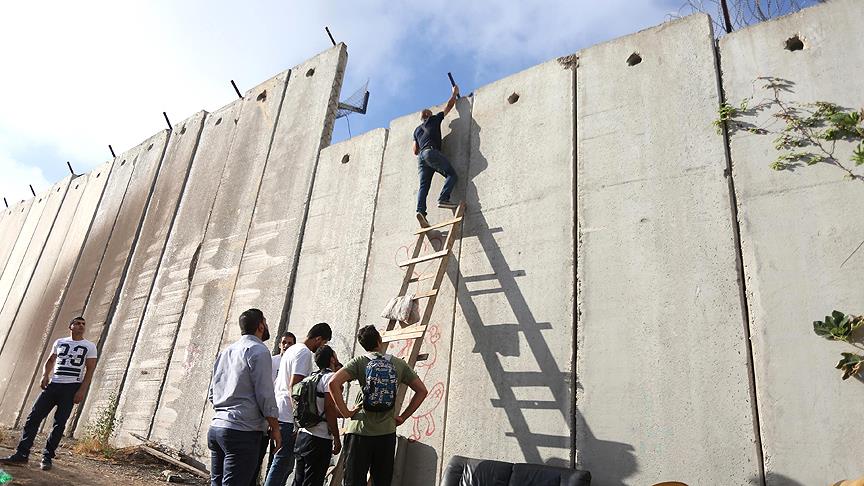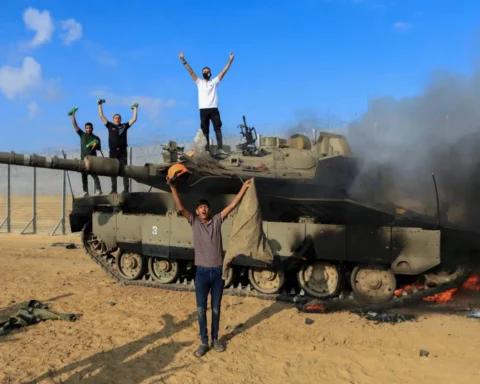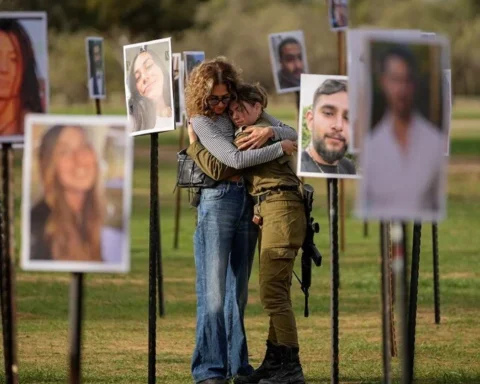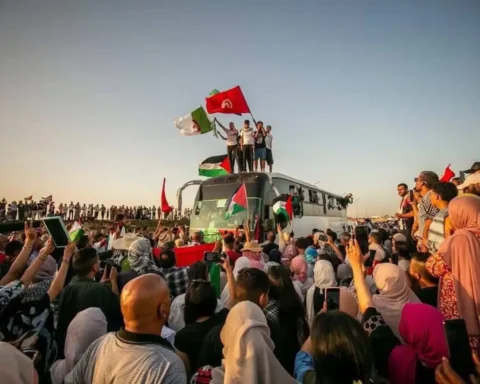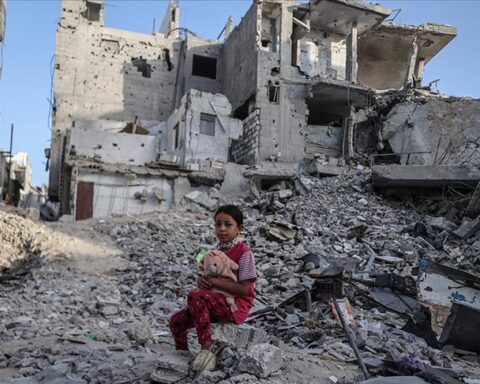The walls that surround us were built to make the Nakba eternal
They surrounded us with walls so that we thought the Nakba was forever. Instead, we forgot that the walls existed, so we could see the Palestine we’ve always dreamed of.
Growing up, we used to seize the rare opportunities when the Lebanese army granted us permits to “visit Palestine” — which, in reality, meant visiting South Lebanon just beyond the Khardaly checkpoint, which Palestinian refugees are not allowed to go beyond further due to “security concerns”.
I remember the first time I saw Palestine — it was through Fatima’s Gate, in the village of Kfar Kila, one of the closest points to the border. Behind me was a small café, and in front of me were wires. My mother kept warning me not to go any closer — the wires might be electrified.
And just beyond them: Palestine.
I remember a young man appearing on the other side, chanting “Allah and Walid Joumblat” — a sanctification of the prominent Lebanese Druze politician who was the leader of the Progressive Socialist Party. A Lebanese boy who was with us was searching for rocks to throw at the Israeli military jeeps when they passed by across the border. He found a few, but never threw them when the jeeps finally arrived.
My two younger siblings, the boy with the rocks, and I stood still. Inside the jeeps were a few soldiers, moving slowly as they approached. To our surprise, the soldiers made silly faces at us as they passed. I remember starting to cry. In my heart, I felt what “oppression” means for the first time in my life, and it felt like a violation.
I had this reaction for two reasons: first, the soldiers made us feel that they had something we could never have, and second, the houses on the other side were so nice and beautiful, while I lived in a crowded and dilapidated refugee camp. I realized that was the first time in my life that I actually felt the ache of what it meant to live in a camp that we weren’t supposed to be in.
A few years after that day, Israel began building a wall, using the same concrete it had used in the West Bank, but now in South Lebanon. It was huge. Palestine was no longer visible.
But Palestinians have always proved they are capable of seeing Palestine even when it is not there. When we went to the beach in Tyre, any Palestinian would look south and say, “See those lights? After them, there’s Akka.”
I grew up thinking that behind any sea, Palestine is there, regardless of its geographic location. Realistically, nothing was visible. But Palestinians expressed their deliberate decision to see Palestine, regardless of the wall’s presence.
This is how I learned to stop seeing the wall altogether. I no longer even felt its existence.
Resisting the forever Nakba
That’s why I felt so taken aback when, many years later, during my PhD studies, I found myself perplexed when the lecturer asked us to theorize the West Bank separation wall in a class discussing theories of violence.
I sat amongst my classmates, listening to the various innovative ways they were able to visualize and reproduce theories of violence and how they manifested in the case of the wall separating the West Bank from the rest of Palestine. I listened to what they had to offer as the lecturer deftly moderated the discussion, but I remained silent.
I had done the reading, but it seemed that I could not grasp the concept of the separation wall. I had never encountered that particular wall, and the closest I’ve been to Palestine was during those trips to the border in southern Lebanon — the other walls I had been surrounded by my entire life were now relegated to a place in my memory I preferred to remain buried.
I never expected that pursuing my PhD would place me in such close proximity to a pain I’ve tried to ignore and act like it didn’t exist. I now find myself constantly wondering at the fact that I am the product of a reality whose starting date is the Nakba — that this reality is the product of forms of violence I did not even know existed.
77 years after the Nakba, a genocide of its grandchildren is now being livestreamed on our colored screens. And what’s perverse is that Palestinians, rather than being given space to grieve, are expected to make sense of it, to be both the subject of suffering and the outside observer who renders it intelligible.
Not for our own sake, but to validate our suffering and prove our pain, to translate the violence of our lives into something that can be understood.
But violence carries its own explanation within it. Each episode of the Palestinian Nakba is itself a demonstration of how far human madness can reach — and madness, in its raw form, is inherently difficult to comprehend.
Yet today, we see Palestinians in Gaza producing forms of knowledge amid their genocide, trying to turn annihilation into a discourse that can be rationalized.
The motivation for this is to make the genocide comprehensible. It must not exceed the limits of common sense, or else it risks becoming figurative, imaginative, and unreal.
So Palestinians have to wear their injuries in order to showcase them to the world. In the words of Mahmoud Darwish, the injury has been turned into an exhibition, and in doing so, we inflict a kind of violence on ourselves — what I call “reflexive violence.”
After decades, regardless of the geographic or architectural structures that separate Palestinians, they prove that they are able to construct for themselves the reality they want to see. Despite the walls, the borders, the barbed wire fences, they are erasing all of those barriers so they can see the Palestine they have always dreamed of. That’s why “theorizing the wall” made no sense to me. In my mind, it does not exist. The only thing that exists, the only reality we can be certain of, is that Palestine remains.
Pinpointing the Nakba to a specific date in order to render it commemorative risks historicizing a violent event as if it only happened in the past. But it’s alive and well today, not only in its lasting effects, but as an ongoing process of erasure. This is why the very concept of the “ongoing Nakba” has become a staple of our collective memory — and our collective present.
But the Nakba, just like the wall, is not meant to be understood. The Nakba was meant to make us disappear, and the walls were built to make sure we didn’t see the Palestine that lay beyond them — until we forgot that Palestine existed. Instead, we chose to forget the wall itself, even 77 years later.
- Amena al-Ashkar is a Palestinian journalist and refugee living in Lebanon.
Source: https://mondoweiss.net/2025/05/the-walls-that-surround-us-were-built-to-make-the-nakba-eternal/

